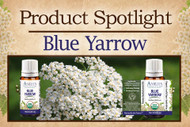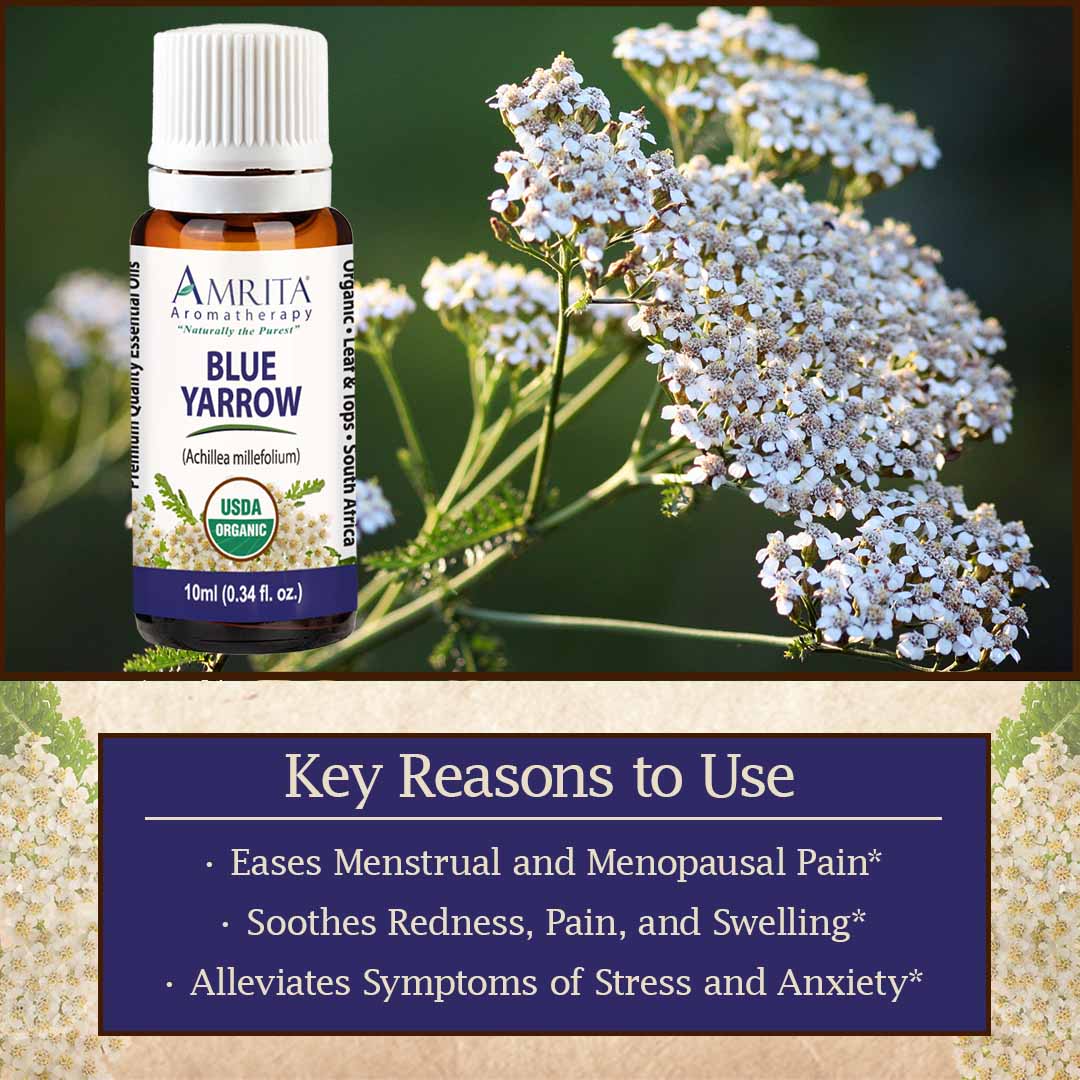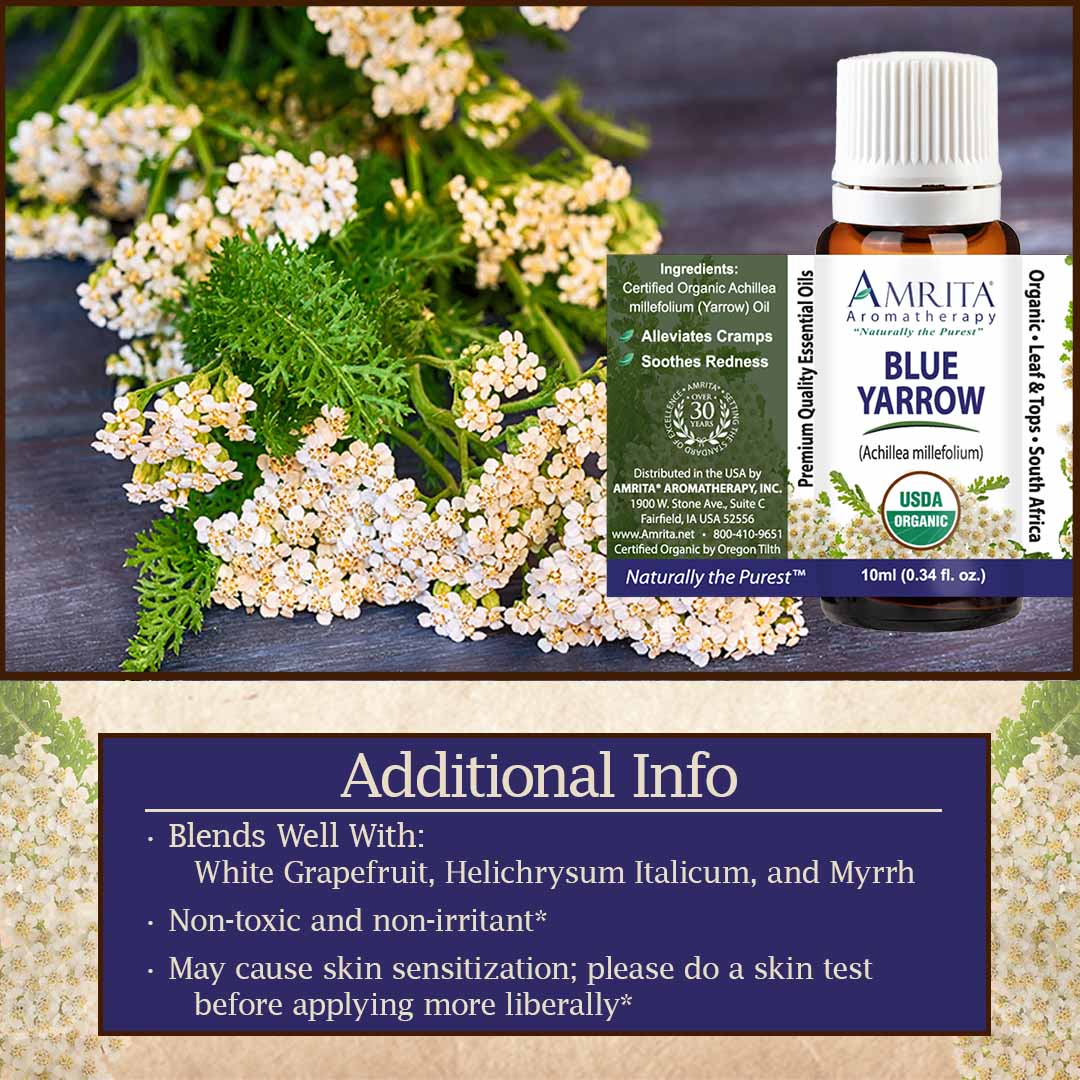Product Spotlight: Blue Yarrow
Jul 26th 2023
Posted by Dr. Christoph Streicher and Chase F.
What is
something you consider to be “old?” A classic silent film, perhaps? Better yet,
what is something you consider to be “ancient?” The Parthenon? The Pyramids?
Certainly, the Great Sphinx of Egypt is ancient, right? When speaking in terms
of “old” and “ancient” one begins to think in terms of centuries and millennia
rather than months or years. Well, the silent film era was about one century
ago. The Sphinx is believed to be at least 4.5 millennia old. So now, try this
one on for size… In 1960, an excavation site near Shanidar, Iraq revealed that Yarrow flowers were used to decorate a Neanderthal grave which dates back to more
than 60,000 years ago. That’s over 60 millennia, for those who are counting.
Now, that’s ancient!
Even before the fossilized pollen specimens found in the grave were tested, it was clear by some of their shapes which plant species they had come from. This discovery, that Neanderthals had been utilizing plants such as Yarrow in this manner, was shocking to say the least. The mainstream historical view of Neanderthals had typecast them as brutish, primitive creatures, hardly more evolved than apes. But now, it was clear that they had exercised ritual burials long before archeologists had previously assumed which led not only to the implication that Neanderthals may have believed in an afterlife, but also hinted at what they might have cherished in their regular daily lives. It seems that Yarrow must have held a special place in their hearts.
What is Yarrow? How is it different from Blue Yarrow Essential Oil?
Yarrow (Achillea millefolium) remains a mainstay in herbalist’s gardens due to its hardiness, adaptability, and therapeutic value. It usually grows up to 3 feet high with flower heads made up of tiny white flowers, though some subspecies will yield pink, purple, or orange flowers. While the first part of its scientific name refers to the Ancient Greek warrior, Achilles, who was purportedly an avid believer in Yarrow’s healing abilities, the second part, millefolium, can be translated roughly as “thousands of leaves.”* This refers to division of the plant’s leaves into many small sharp blades. Some say the shape of these leaves was nature’s hint to Achilles that the plant would be good for healing sword wounds.*
As time has marched on, many ancient cultures caught on to the therapeutic values of Yarrow.* Because it grows so easily throughout most regions of the world, many walks of life had access to it and independently drew the same conclusions regarding its benefits. The Ancient Chinese were no exception: Lore states that Yarrow grows around Confucius’ grave and that its straw is the best way to cast the I Ching, as it is thought to balance yin and yang while facilitating unity between heaven and earth.
Meanwhile, on the other side of the globe, Native American tribes were also using Yarrow in similar fashion. In fact, it was utilized by cultures from the East, West, and everywhere in between. What’s truly impressive is that the Ancient Chinese, Ancient Greeks, Indigenous Americans, and countless others all tended to use it for many of the same ailments. The slowing of bleeding from wounds and the facilitation of their quick healing are perhaps the most ubiquitous examples mentioned across the board… in just about every ancient reference.* Most of these cultures were isolated from each other, but virtually all of them agreed on the same therapeutic abilities of the plant (for the most part), and many of them attributed to Yarrow a profound sense of balance as it exhibited seemingly contradictory traits in perfect harmony.
The Yarrow plant does not actually yield blue flowers, so what is Blue Yarrow Essential Oil? Well, when the oil is steam-distilled from the leaves and tops, matricin (which occurs naturally within the plant) chemically transforms into chamazulene, a compound that takes on a rich blue color and exhibits impressive anti-inflammatory, antirheumatic, and antiallergenic properties.* Chamazulene is also present in “blue” chamomile oils, resulting in their azure hue and their sharing of certain therapeutic actions.* Note: not all Yarrow plants have mateicine; some have more, some have less. If there is a lot, the color of the oil is a deep blue. If there is a little, then little chamazulene is produced and the oil will appear green. The deep Blue Yarrow is the preferred oil for therapeutic benefits.
Why should you use Organic Blue Yarrow Essential Oil? What are the therapeutic benefits of using it?
The unique aromatic profile of Blue Yarrow can be described as fresh, green, sweet-herbaceous, and slightly camphoraceous. Its uniquely balanced scent is known to help alleviate stress, dissipate anger, soothe irritability, and quell insomnia.* While its aroma is quite pleasant, it also happens to be an antibacterial, antifungal, and a deterrent of insects and parasites.*
The synergistic qualities of Blue Yarrow Essential Oil are used to treat wounds in the initial stages of healing.* Yarrow helps slow or stop bleeding and promotes regeneration of new skin with its cicatrisant and haemostatic properties.* It is even thought to promote hair growth, with encouraging trials to support the claim.* Additionally, it exhibits astringent actions which make it a perfect choice for balancing oil on the skin and scalp.*
As a carminative, stomachic, and tonic, Blue Yarrow Essential Oil can help facilitate digestion and relieve discomfort.* It is also an expectorant and antiseptic which can help clear the body of excess mucous and toxins.* It benefits the circulatory system as well by helping to lower blood pressure, lessen fever, reduce varicose veins, tackle migraines, and relieve hemorrhoids.*
Much like “blue” chamomile oils, Blue Yarrow Essential Oil contains chamazulene; a chemical not naturally present within the plant but emerging during the process of steam distillation due to heat and pressure. Chamazulene is responsible for the azure hue of these oils and for their impressive anti-inflammatory, antirheumatic, and antiallergenic properties.* Blue Yarrow Oil is also an emmenagogue which can significantly help with menstrual and/or menopausal pain, and it exhibits antispasmodic abilities that can alleviate stomach cramps and gall bladder pain.*
How would one use Blue Yarrow Essential Oil?
Blue Yarrow Essential Oil can be applied using a diverse variety of methods. Applying a properly diluted dose topically can provide benefits to the integumentary system (skin, hair, and nails), nervous system, respiratory system, circulatory system, and genito-urinary system.* Topical methods can range from focused application at specific areas of need, to whole-body massage and aromatic bath. Another method of application for Blue Yarrow is via diffusion and inhalation. This will really accentuate its benefits to the nervous system, respiratory system, and especially the digestive system in ways that topical application cannot.* Let’s look at how and why these methods should be used.
- Overall Topical Application: 4-5% Dilution
- To focus on specific areas of need, dilute up to 4-5% of Blue Yarrow (20-25 drops per tablespoon of carrier oil) and apply to the skin. It is recommended, however, to do a spot-check first. This is because in rare instances Blue Yarrow has been known to cause contact dermatitis in certain individuals.* It can help wounds heal faster with its cicatrisant and antibacterial properties. Localized areas of pain, acne, and redness can be alleviated with its anti-inflammatory and astringent actions.* Apply to the chest in order to experience the aromatherapy vapor released by the oil. It will also help to deter insects and parasites.* Some encouraging studies even show that Blue Yarrow can help to stimulate hair growth.*
- Whole-Body Massage Application: 2-3% Dilution
- Another option is to apply a slightly lower concentration of Blue Yarrow Essential Oil to the entire body along with a relaxing massage. This is a great way to experience all of the same delightful effects that would be obtained from other topical application methods, but in a more broad and balanced way.* Benefits to the integumentary system (skin, hair, and nails), nervous system, circulatory system, and genito-urinary system are the most prominent when utilizing this method.* This is especially true when trying to tackle ailments existing throughout the entire body such as stress, fever, overall soreness, high blood pressure, and menstrual issues.* Proper dilution for massage oil with Blue Yarrow is up to 2-3% (10-15 drops per tablespoon of carrier oil).
- Aromatic Bath Application: 2% Dilution
- For the nervous system, this may be the most tranquil way to topically apply Blue Yarrow Essential Oil. Simply dilute up to 2% of Blue Yarrow (10 drops per ounce of your favorite bath salts or bath milk) before adding to a full, warm tub of water. Then, immerse and enjoy!
- Stress and anger will dissipate as they become replaced by feelings of calm and balance.* And while many of the same therapeutic benefits previously mentioned with other topical methods also apply to this one, tackling insomnia is perhaps its strongest suit.* It’s hard to imagine a better way to lull the body, mind, and spirit into a sense of harmony and comfort than by adding a little bit of Blue Yarrow Essential Oil to a soothing, steamy bath.*
- Inhalation Application: Add a few drops to a nasal inhaler.
- Blue Yarrow Essential Oil unifies a dynamic range of notes within its aromatic profile. Its fresh, woody, herbaceous, and slightly sweet components have an uncanny ability to help soothe irritability and provide feelings of calm, cool, balance to the mind and spirit.* The inhaled essence of this oil can help clear excess mucous from the lungs, relieve indigestion, eliminate toxins, lower blood pressure, and soothe migraines.* As an added bonus, Blue Yarrow can also deter insects within the immediate area of diffusion.* Its scent is complex, yet harmonious, whether it’s by itself or within a smartly configured blend of oils.
What would blend well with Blue Yarrow Essential Oil?
Blue Yarrow can stand alone with its unique aromatic profile, but it also blends quite well with plenty of other oils due to its balanced combination of notes. For a warm and soothing atmosphere perfectly balanced between floral and tart notes, simply blend Blue Yarrow with Lavender and Grapefruit. This blend can help reduce stress, lower blood pressure, and deter insects.* For help with lung congestion, indigestion, or sluggishness, try joining Blue Yarrow with Helichrysum and Myrrh.* And finally, if insomnia is your nemesis, then try teaming up with Blue Yarrow, Roman Chamomile, and Angelica Root to get some much-needed backup in the battle for sleep.*
Here are some DIY recipes for you to try in your nebulizer:
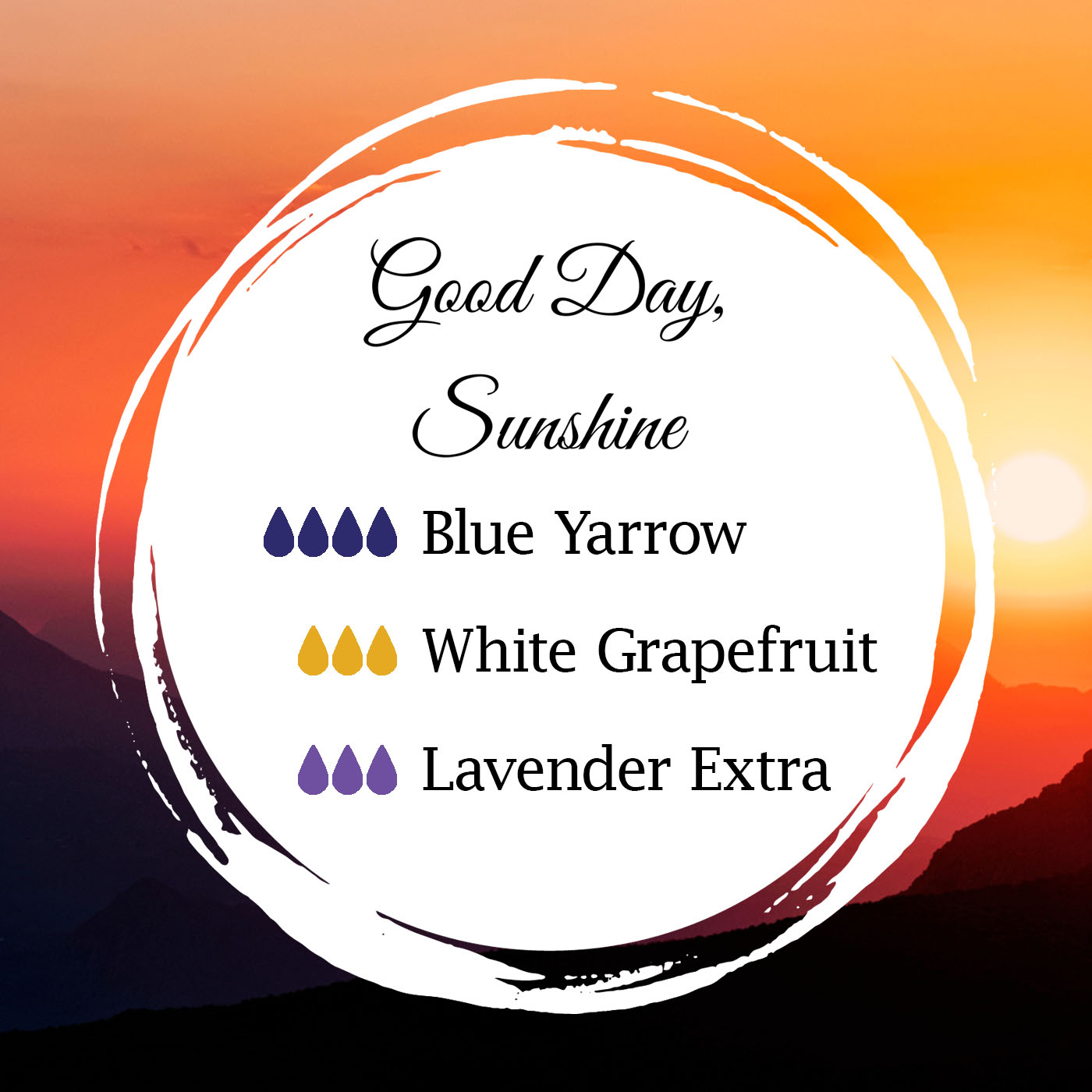 | 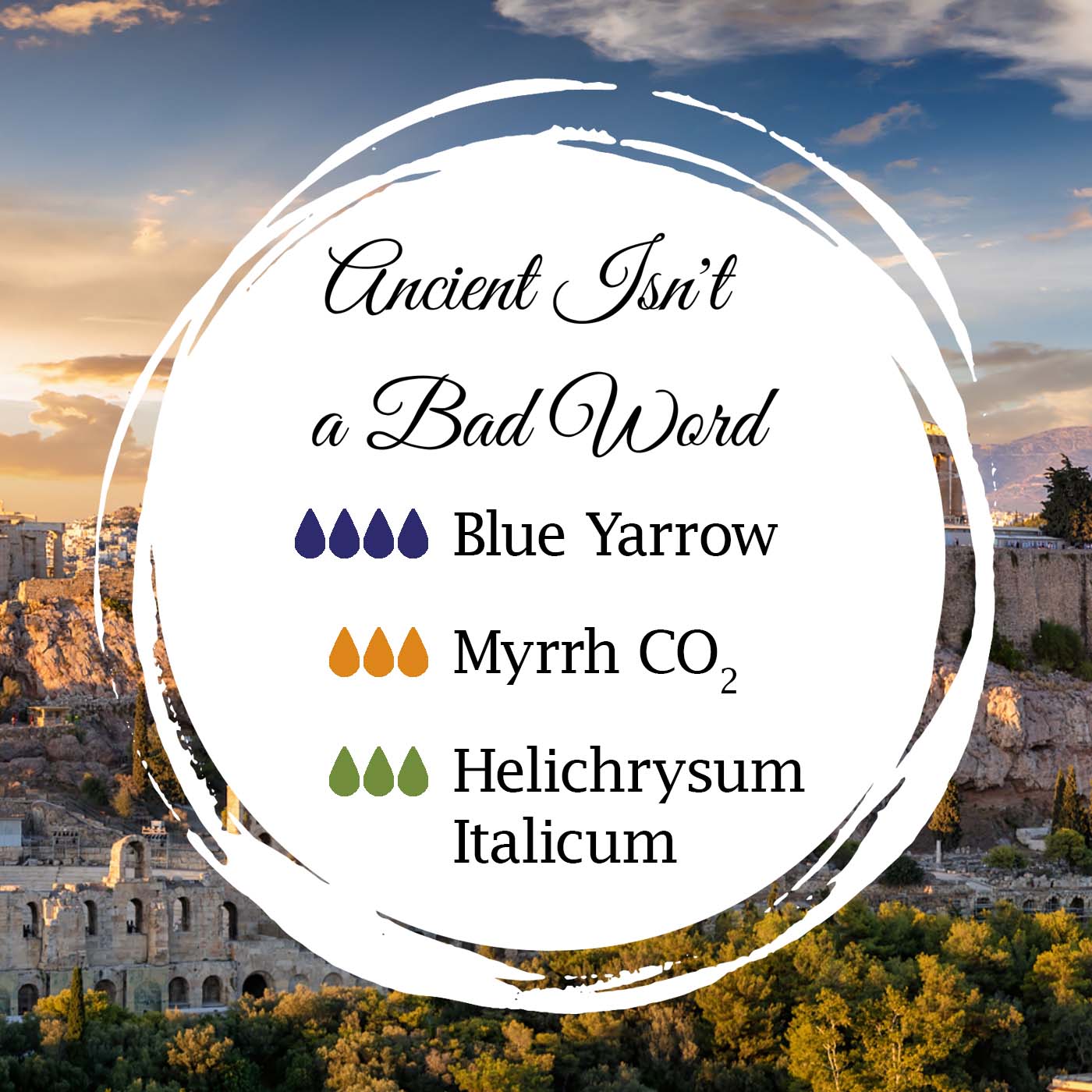 | 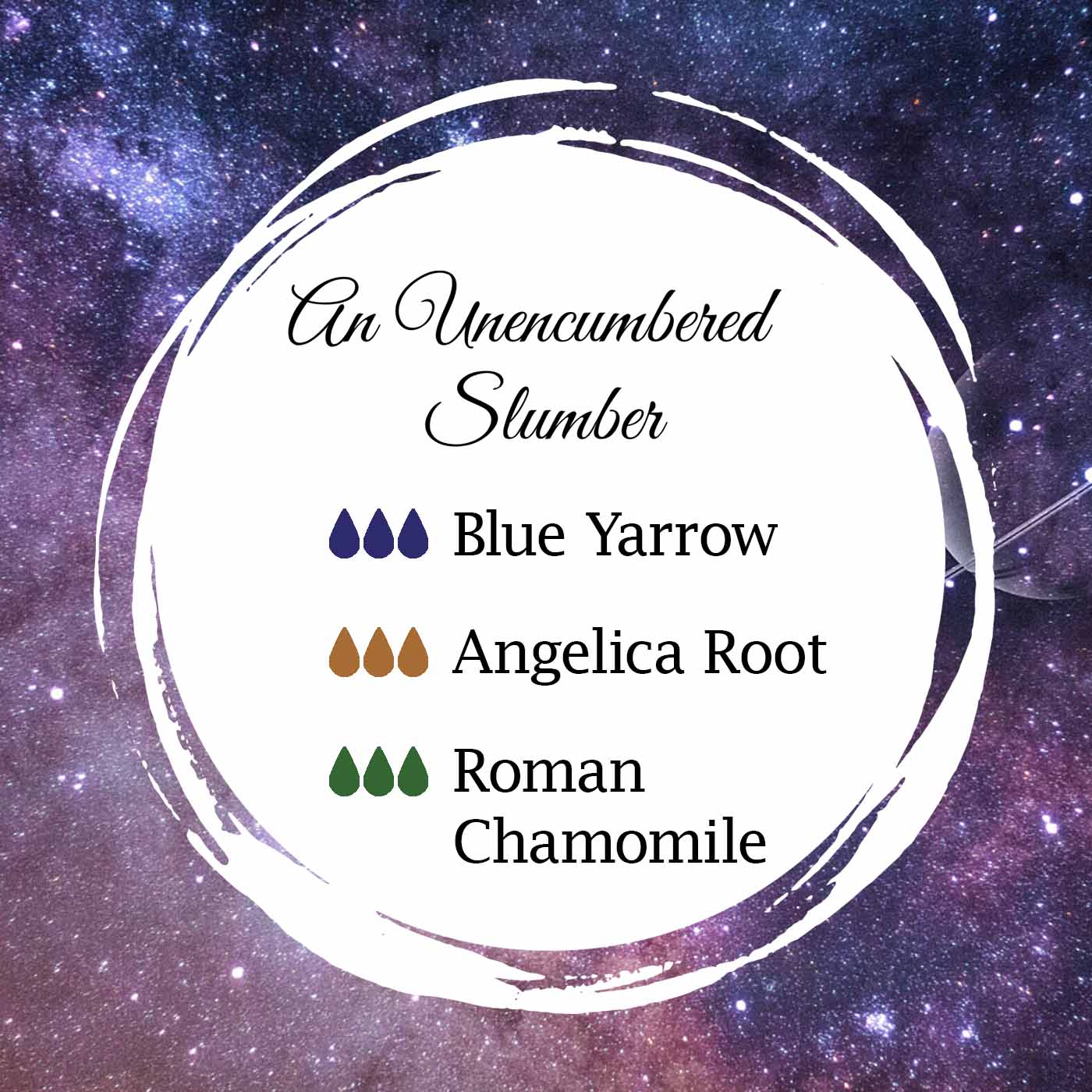 |
Final Thoughts from the Amrita Team…
Astonishingly, there are regions in the modern world where Yarrow is considered an invasive weed. Yes, you read that right… invasive. Would the Neanderthal, discovered after 60,000 years at the excavation site in Iraq, be rolling in his yarrow-decorated grave to hear such a thing? It is said that Achilles’ last wish before death was that there was a supply of Yarrow on-hand. What would he say to someone who considers it invasive? Perhaps Confucius, professed believer in Yarrow’s perfect balance of yin and yang, would sum it up something like “Yarrow has adapted within the world, just as the world has adapted around Yarrow.”
Okay, that may be a stretch. But the point is Yarrow has been around for a very long time, and thankfully it’s not going anywhere soon. With the modern methods of extracting Blue Yarrow Essential Oil, we have discovered novel ways to utilize an ancient plant which provides novel benefits to be enjoyed from it. If this one is not already in your aromatherapy toolkit, then what are you waiting for? Try some today!
Happy Blending!
*These statements have not been evaluated by the Food and Drug Administration. These products are not intended to diagnose, treat, cure, or prevent any disease.

